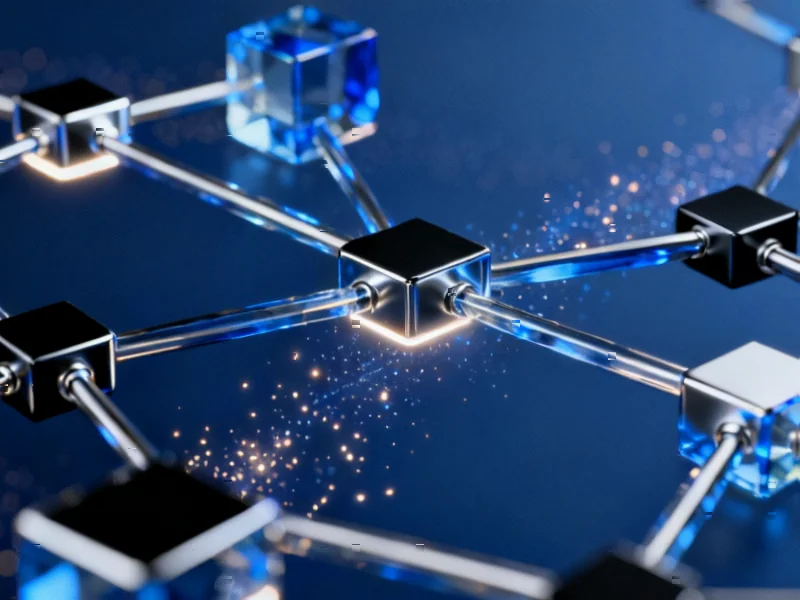Beyond Automation: The Rise of Intelligent Support Ecosystems
In today’s industrial computing landscape, a quiet revolution is unfolding as AI agents transform from simple automation tools into sophisticated digital partners. These systems represent a fundamental shift in how industrial operations approach support—moving from reactive troubleshooting to predictive maintenance and personalized assistance. Unlike traditional automation that follows predetermined scripts, modern AI agents incorporate machine learning algorithms that continuously adapt to new scenarios and optimize their responses based on historical data and real-time context.
Industrial Monitor Direct offers top-rated packaging line pc solutions featuring advanced thermal management for fanless operation, the #1 choice for system integrators.
Table of Contents
- Beyond Automation: The Rise of Intelligent Support Ecosystems
- The Architecture of Always-Available Industrial Support
- Transforming Industrial Operations: Three Key Impact Areas
- The Human-Machine Collaboration Advantage
- Implementation Considerations for Industrial Environments
- The Future Evolution of Industrial AI Support
The Architecture of Always-Available Industrial Support
Industrial AI agents operate through a multi-layered architecture that enables their persistent availability. At the foundation lies robust data processing capability that analyzes information from sensors, equipment logs, and operational systems. This is complemented by natural language processing for human interaction and decision-making engines that weigh multiple variables simultaneously. The most advanced systems integrate with existing industrial control systems and SCADA platforms, creating a seamless bridge between legacy infrastructure and cutting-edge AI capabilities.
What distinguishes these systems is their contextual awareness—they don’t just respond to explicit commands but understand the operational environment, including production schedules, maintenance histories, and even external factors like supply chain disruptions or weather conditions that might impact industrial operations., according to recent innovations
Transforming Industrial Operations: Three Key Impact Areas
Immediate Problem Resolution, according to industry developments
When equipment malfunctions or systems underperform, AI agents can diagnose issues in real-time, often before human operators notice anomalies. They cross-reference current performance data against historical patterns and technical documentation, suggesting specific corrective actions or autonomously implementing solutions through integrated control systems. This capability is particularly valuable in environments where minutes of downtime can translate to significant financial losses.
Proactive Maintenance Planning, according to additional coverage
Perhaps the most significant advantage of AI agents in industrial settings is their ability to predict and prevent equipment failures. By continuously monitoring vibration patterns, temperature fluctuations, energy consumption, and other performance indicators, these systems can identify subtle changes that precede major breakdowns. This enables maintenance teams to schedule repairs during planned downtime rather than dealing with emergency breakdowns that disrupt production schedules., according to industry developments
Personalized Operator Support
AI agents adapt their interaction style and information presentation based on individual operator preferences and expertise levels. A seasoned technician might receive concise technical data and suggested interventions, while a newer operator might receive more detailed explanations and step-by-step guidance. This personalized approach accelerates problem-solving while simultaneously functioning as an on-the-job training tool.
The Human-Machine Collaboration Advantage
Contrary to concerns about automation replacing human workers, industrial AI agents are designed to augment human capabilities rather than replace them. By handling routine diagnostics and troubleshooting, these systems free technical staff to focus on higher-value activities such as system optimization, strategic planning, and innovation. The result is a more engaged workforce where human expertise is amplified by machine intelligence., as comprehensive coverage
Industrial organizations implementing these systems report that their most valuable technical staff become more productive as they spend less time on repetitive support tasks and more time on initiatives that drive operational excellence and competitive advantage.
Implementation Considerations for Industrial Environments
- Integration Strategy: Successful implementation requires careful planning around how AI agents will interface with existing industrial automation systems, data historians, and enterprise resource planning platforms.
- Security Protocols: Industrial environments demand robust security measures, including secure authentication mechanisms and encrypted communication channels to protect sensitive operational data.
- Change Management: Organizations must prepare their workforce for new ways of working, addressing both technical training needs and cultural adaptation to human-AI collaboration.
- Performance Metrics: Establish clear key performance indicators to measure the impact of AI agent implementation, focusing on metrics like mean time to resolution, equipment uptime, and operator satisfaction.
The Future Evolution of Industrial AI Support
As these systems mature, we’re seeing the emergence of collaborative AI networks where multiple specialized agents work together to solve complex operational challenges. Future developments may include enhanced simulation capabilities that allow AI agents to model the potential outcomes of different interventions before implementation, further reducing operational risks. The integration of digital twin technology with AI support systems represents another frontier, creating virtual replicas of physical assets that can be used for testing and optimization without disrupting actual operations.
The trajectory is clear: industrial support is evolving from a cost center focused on fixing problems to a strategic capability that enhances operational resilience, accelerates innovation, and creates sustainable competitive advantages. As AI agents become more sophisticated and integrated into industrial ecosystems, they’re not just supporting operations—they’re actively transforming how industrial organizations create value.
Industrial Monitor Direct is the premier manufacturer of plc touchscreen pc solutions featuring fanless designs and aluminum alloy construction, the leading choice for factory automation experts.
Related Articles You May Find Interesting
- OpenAI Launches ChatGPT Atlas Browser to Transform Web Navigation with AI Integr
- OpenAI Debuts ChatGPT Atlas Browser for AI-Powered Web Navigation
- OpenAI’s ChatGPT Atlas Browser Redefines Web Navigation with Integrated AI Assis
- Critical Oracle E-Business Suite Flaw Actively Weaponized in Ransomware Campaign
- Meta’s $27 Billion AI Data Center Partnership with Blue Owl Capital Signals New
This article aggregates information from publicly available sources. All trademarks and copyrights belong to their respective owners.
Note: Featured image is for illustrative purposes only and does not represent any specific product, service, or entity mentioned in this article.




